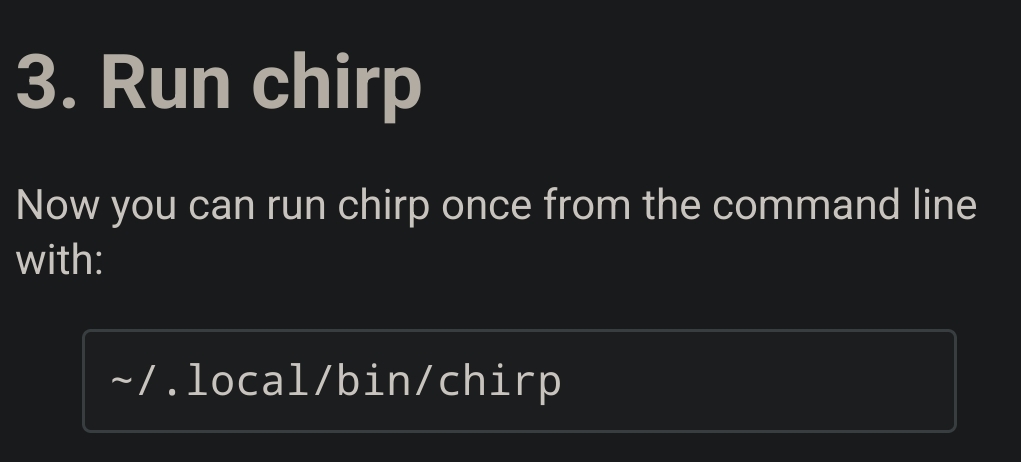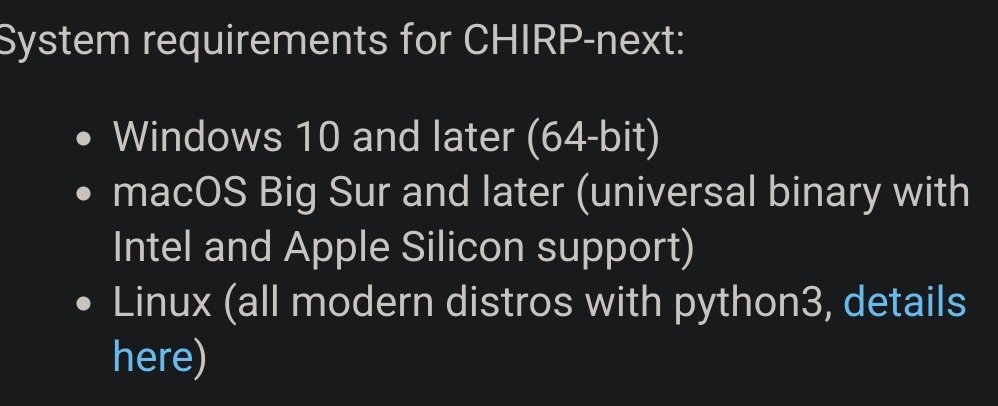- 13 Posts
- 51 Comments

 0·5 months ago
0·5 months agoLinux Mint Debian Edition would be a pretty solid, pre-customized distribution.
I’ve had great experiences with Linux on Lenovo over the years: would be my first recommendation.
I currently use a Dell Inspiron, while it’s works great, I had to do some extra work occasionally. I love that I can get fingerprint login with it on Linux though.
If it’s just Internet access, would you want to use something more locked down like Fedora kiosk?
No software is guaranteed to run on all platforms: the developers choose to make it available or not.
I did some quick googling, and it seems fairly easy to install it:
Use Ubuntu (if you’re not familiar with, and don’t want to be familiar with terminal basics), and install chirp from the Ubuntu App store. Snap is just a name of their package format, and their app store links to snap craft.
If you’re not using Ubuntu, that’s your choice, you’ll either have to install snap, then do the same, but it’s more work. Or play with the terminal just a bit to follow their instructions.
Details
If you’re on Ubuntu or have snap installed - it’s a one click operation to install chirp: https://snapcraft.io/chirp-snap
If you’re on another distribution by choice: https://chirp.danplanet.com/projects/chirp/wiki/ChirpOnLinux
this page has a 3 step install for mainstream Linux distributions:
- Install dependencies (they’ve listed the commands)
- Install chirp and Python dependencies (commands provided)
- Run chirp



 8·10 months ago
8·10 months agoDo the three finger swipe left and right to switch desktops.
Then three finger swipe upwards for overview.
It’ll be Gnome all over, I promise you!

 71·11 months ago
71·11 months agoProprietary snap store backend that is controlled by Canonical: that’s it.
I used Ubuntu for years: installed it for family and friends. I moved away around a year ago.
Moving packages like Firefox to snap was what first started annoying me.
If the backend was open source, and the community could have hosted their own (like how flatpak repositories can be), I might have been slightly more forgiving.
Did a quick Google to find if someone had elaborated, here’s a good one:


 1·11 months ago
1·11 months agodeleted by creator
You can still try it.
Multiple mounts of the same filesystem is nothing special: I’ve done it on multiple occasions for various tests.
Keep you setup, install smb4k, see how stable it is for you.
smb4k, while primarily for KDE, is awesome for samba shares.
You might want to give it a spin.
It is certainly useful for some use cases such as network print servers (I have a dedicated lxc container on the network to do this) and custom conversions of pages (during my digging, I learned about companies using a CUPS network printer to watermark every document being printed).
I’m not an expert by any means: it is definitely a useful tool in certain cases, but oh man… the documentation was a bit hard to figure out for me!
Mission Accomplished! My printer driver now has a MirrorPrint Option, and selecting it enables Mirror Printing. For convenience (since I don’t see a client side option to flip mirror printing), I have a doppleganger of my regular printer, and I named it MirrorTest - screenshot below. When I need a mirror print, I just send it to the mirror printer.

Actual Changes
Here’s the relevant excerpt (added) in
/etc/cups/ppd/MirrorTest.ppd(I added this UI option right below the Toner option). Excerpt adds a MirrorPrint Toggle (boolean) to the printer defaults setup. When enabled - the printer will print in mirror mode.*%=== Mirror Printing ================================ *OpenGroup: General *OpenUI *MirrorPrint/Mirror Print: Boolean *OrderDependency: 110 AnySetup *MirrorPrint *DefaultMirrorPrint: True *MirrorPrint True/MirrorPrint: "<>setpagedevice" *MirrorPrint False/Normal: "" *CloseUI: *MirrorPrintFor further convenience (making sure that a new printer installation didn’t mess up my custom changes, I also updated the relevant ppd file in
/usr/share/cups/model/. Whenever you add a new printer - CUPS will use the corresponding model ppd as a base, and it will apply any settings changes from configuring default to the copied ppd file in/etc/cups/ppd/your_printer.ppd.Hope this helps if someone else is also looking to do something similar!

 121·11 months ago
121·11 months agoTry running it from the command line with
code --disable-gpu.If that works, you can update the desktop shortcut files (exec section) with the same added parameter.
I recently ran into something similar (opensuse slowroll//kde)
Ref: stackoverflow/Google for the
--disable-gpuargument, the desktop file editing - I did for convenience.Here’s how you can find . desktop files
Desktop file reference.- easy format

 5·1 year ago
5·1 year agoThanks for that link, it gave a bit more context into what OP was talking about.
The article does link to this archive.org link, which seems to back the title.
On the other hand, I also see articles like: KDE Foundation hires Dwarf Paladin as new Executive Director, which make me agree that this seems to be a bit on the malicious side.
It does make me want to dig around a bit now though.

 11·1 year ago
11·1 year agoI’m generally not a fan of endless os (very locked down), but this might be a good low-maintenance option for libraries.
Endless comes out of the box with offline educational materials and learning apps.
Flatpak based distribution.

 5·1 year ago
5·1 year agoIf you want persistent messages, use a messaging app like another poster posted. KDE connect should work, but it doesn’t work for my setup for some reason.
If you just need transient messages, which is more of my usecase, and lightweight sending, use pairdrop.
snapdrop and pairdrop app from fdroid for Android, pairdrop website in desktop.
You can just use the website instead of app on phone too.
Sending over LAN is local - it doesn’t go outside your own network.
If devices are on same WiFi, no pairing required.
You can also send across networks by pairing.

 2·1 year ago
2·1 year agoYou’re fine.
Most distributions/derivative distributions are fine for very long periods.
It’s just that when the base distribution itself (Debian, Fedora in your case, Opensuse, etc) are themselves nicely customized out of the box to address user concerns, that’s a very attractive prospect to long time users like myself.
Debian has a lot of history and stability, so if I can use it for myself, family, friends without an additional layer or more of other parties, that’s very appealing.

 5·1 year ago
5·1 year agoI have Nixos on a laptop, and have a love//hate relationship with it.
I love the customizability and declarative setup.
I hate the number of times I’ve sunk down rabbitholes trying to set specific things up on it.
The updates being done via switch are a bit inconvenient, but cool enough.
The fact that I can’t customize everything, particularly on kde, is slightly sad.
All in all, I really like it, but wouldn’t recommend it for my less technical friends, who I’d normally install Ubuntu for. This has gone up my list, close to Opensuse slowroll and Linux mint Debian edition now.

 11·1 year ago
11·1 year agoYes, an opinionated customized installer that seems to be aligned with my own thoughts of great out of the box usage.

 3·1 year ago
3·1 year agoI see, you’re right from that perspective.
For this ‘distro’, I like the emphasis the maintainer put on out of the box usability, including proprietary codecs, extra repositories that are not enabled/added by default, but widely used, flatpak setup out of the box, printer permissions relaxing etc.




I wonder if this is heaven or hell 😅